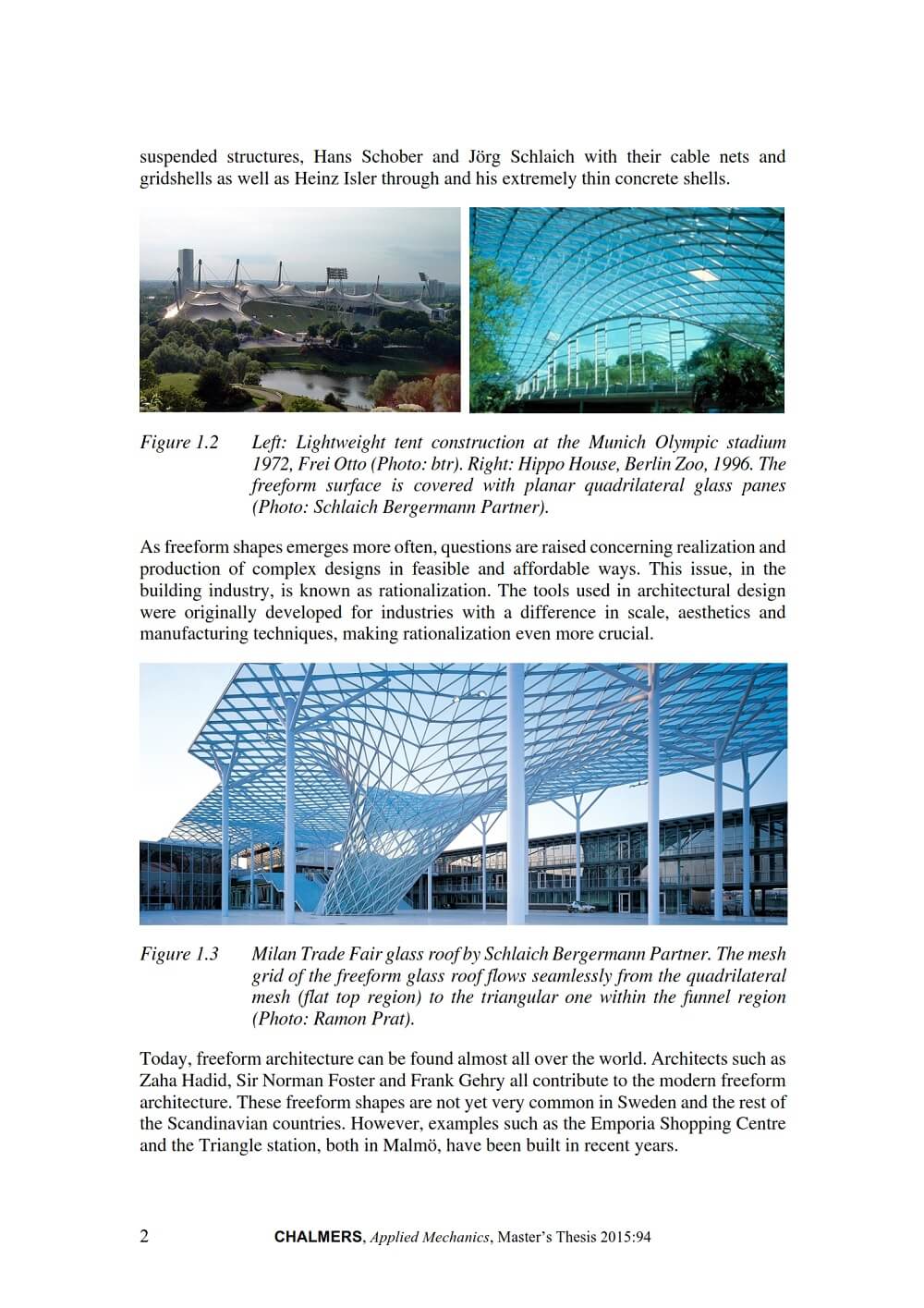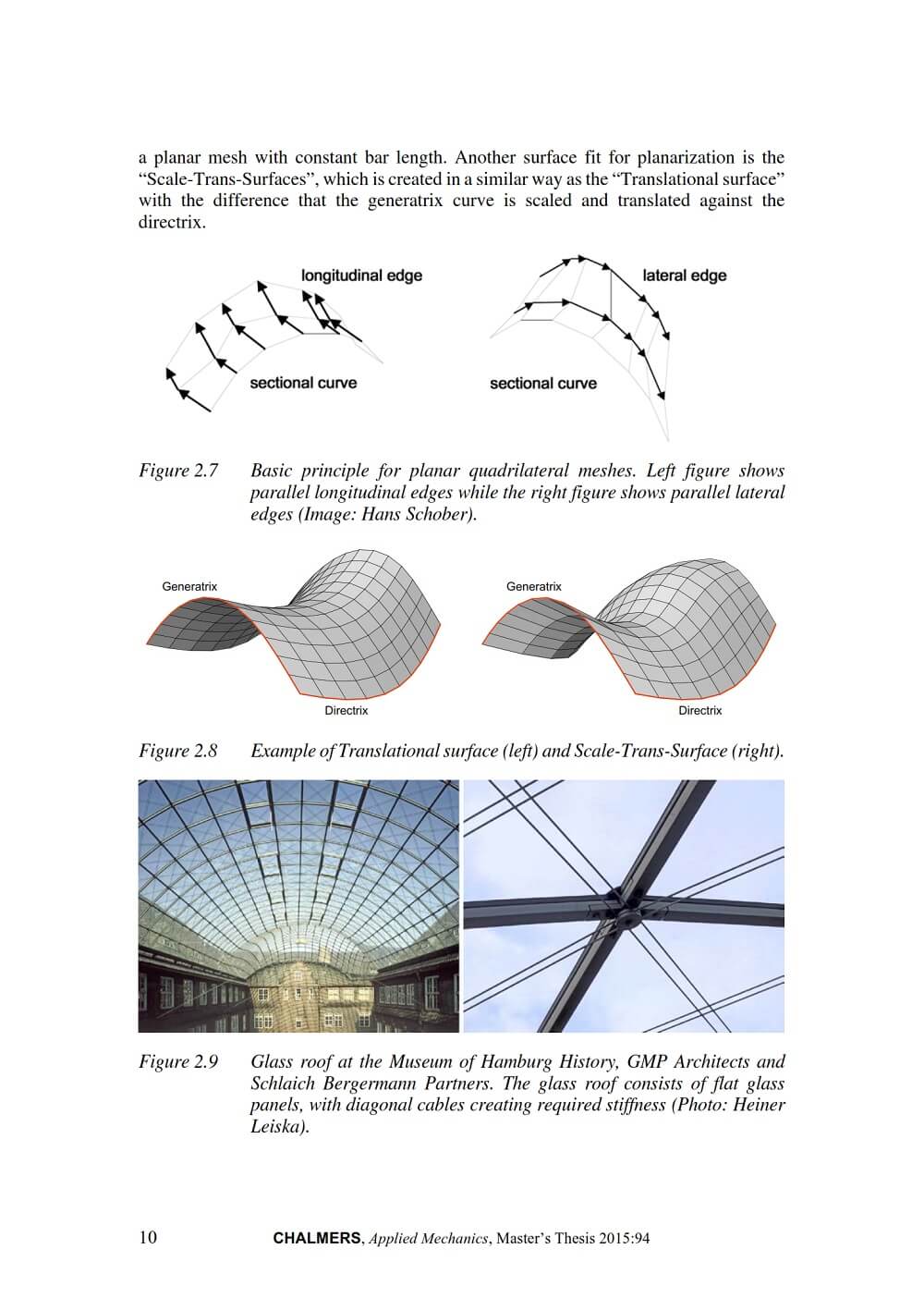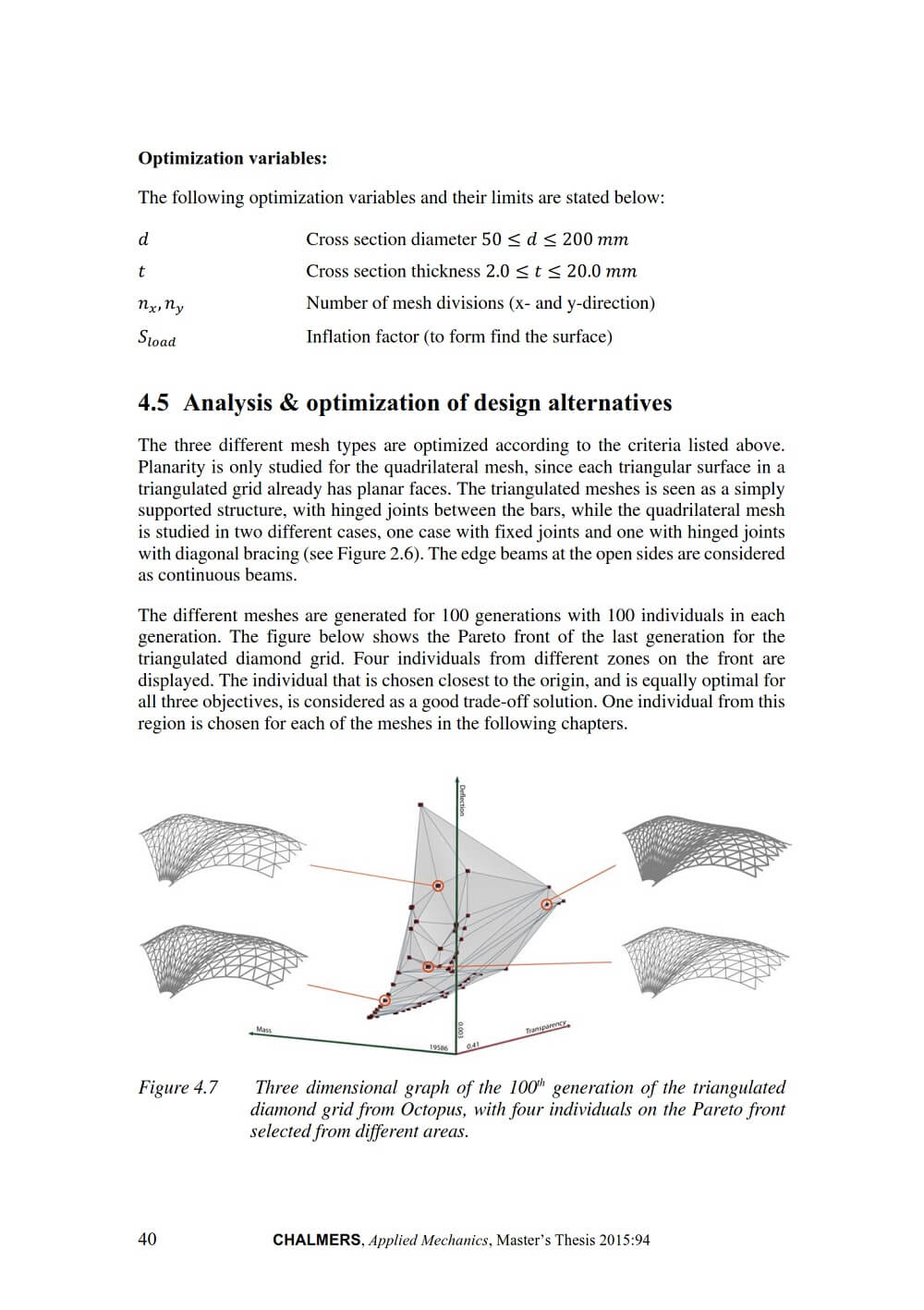Freeform Architecture

With the help of modern computer aided tools, complex architectural shapes are becoming increasingly popular and easy to model and design. As a consequence, questions are raised of how to realize and produce the design in a feasible and affordable way. This issue, in the building industry, is known as rationalization. Today, this process normally takes place at the end of the design process, while if it is considered at an early stage, the greatest gains can be made.
In this study by Viktoria Henriksson and Maria Hult, rationalization in terms of different surface discretization methods has been a main focus. Geometrical theory of how to divide a surface into smaller elements have been studied for historical and modern buildings in order to understand what important factors exist. Site visits and interviews with practicing architects and engineers have been conducted in order to study different design approaches and rationalization of real projects.

This study also explores multi-objective optimization, since most real design projects have several different aspects to consider when rationalization is performed. These are often more or less conflicting, resulting in many different solutions where trade-offs can be made in order to find a desired result. The theory studied in this thesis is applied in a design project, where a new glass and steel gridshell structure is proposed. The structure is designed parametrically in the
Rhinoceros, plugin Grasshopper, and structurally analysed with the FE add-on Karamba. Different possible solutions were investigated by the use of genetic algorithm optimization in the Grasshopper, add-on Octopus. The solutions are compared to each other in order to find an optimal solution regarding load bearing capacity, cost and architectural qualities.
The design project shows that the studied discretization methods have different advantages and drawbacks depending on the specific case. It also shows that the use of genetic algorithms and parametric design can be very effective for generating many different solutions to complex problems. However, the role of the designer is still very important when it comes to judging the result and selecting a design based on qualitative objectives.



































Comments